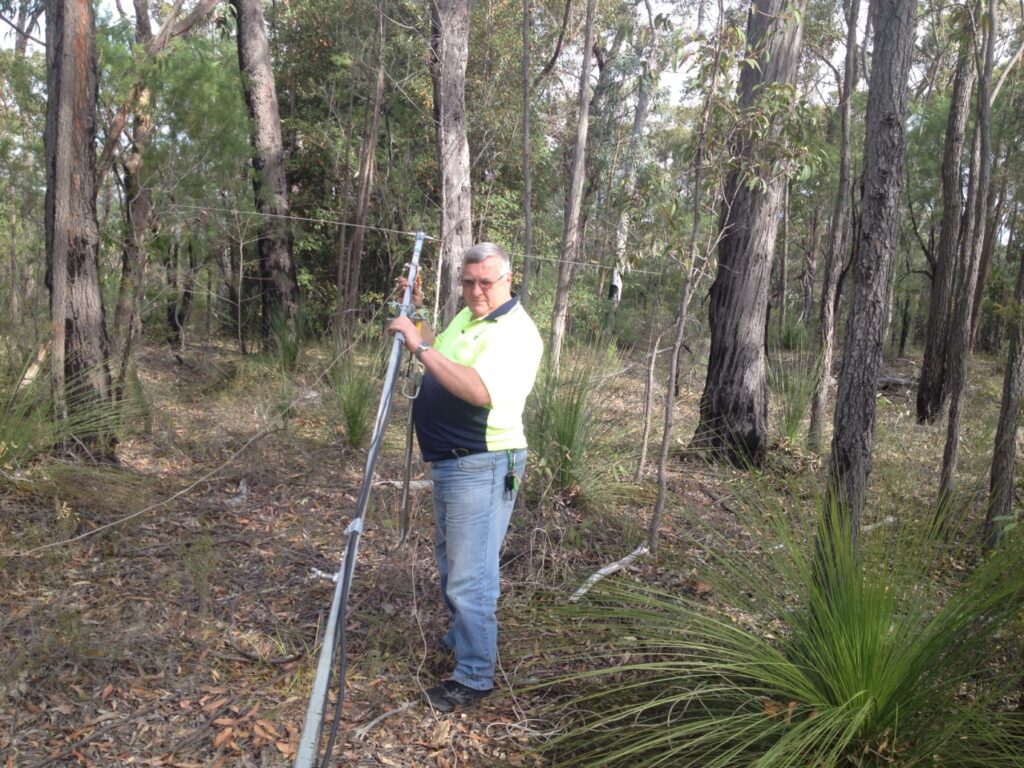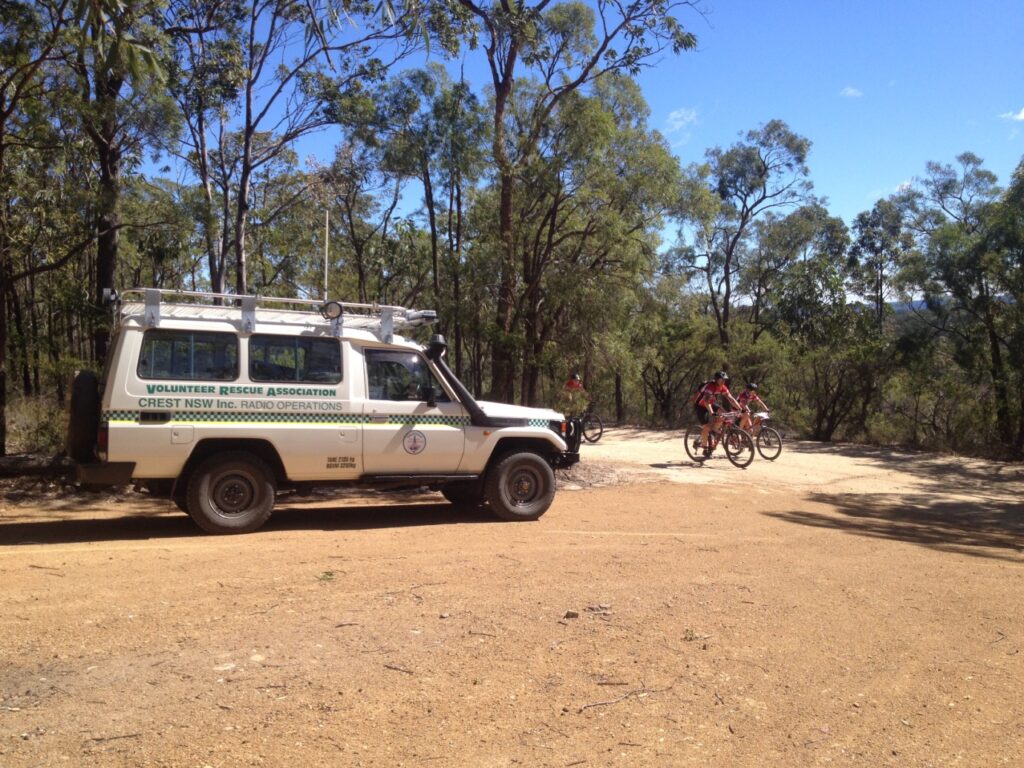The 2020 year will be remembered for the COVID-19 Pandemic and prior to now there was only a couple of jobs this year leading up to mid March 2020. Since then it has been somewhat of a lay period – predominantly working bees. All of a sudden the 26 September is looming and we have three jobs to do around the state all on the same day – this being the Newcastle to Dungog Bike Ride, the Blue Mountains Adventure Race and of course the Wollombi Wild Ride.
At a week out, we do some quick checks on some packs to go out into the field to re-prove to ourselves that everything is there – in terms of pegs, guy ropes, coax cables and mast feet. Richard Akehurst from Newcastle gave their repeater trailer a once over including a service of the petrol generator and confirming the programming of the Icom repeater equipment in the trailer. For this task we configure to bend the signal around the corner into Wollombi so to speak. All good there.
The Newcastle truck which is now at Singleton was also given a once over – in particular confirming antenna configurations for the task as well as antenna VSWR’s. Thursday 24/9/20 was spent dotting i’s and crossing tee’s on the mobile radio kits that were to be temporarily installed into vehicles. To be sure to be sure, we cabled up a 24V-13.8V reducer – good old Dick Smith Electronics brand switchmode type which we bought for a RTA Big Ride back in 2006 and was still brand new in its original carton.
On the morning of Friday 25/9/20, John King and I originally went in two directions. John pre-arranged with Laguna Fire Brigade to install a couple of radios into vehicles which saved time on the day of the event. I made a trip down to Newcastle to pick up the repeater trailer off Richard and then returning it back to Singleton in preparation for the following morning. I then hooked up Singleton’s trailer to “Cairns 62” – the 78 Series Troopcarrier then it was off to the Laguna area to commence setting up for the event.
We have done this event for quite some years now – about thirteen actually and we have been using the current network configuration for about the last nine years. We just rattle it off mechanically now because we know that it works. We put out three VHF-Midband/UHF cross-band units on Boree, Yango and Finchley Tracks with the system hub on Moores Road. The system hub uses Tait T2020 Series II radios each fitted with a UIS-2000 auxiliary board which for this event is configured as a UHF repeater with VHF-Midband cross band output. A Mobile One 9dBi collinear mounted 13.5m above the ground is for the UHF repeater while a RF Industries COD1 vertically enclosed dipole antenna at around 6m gets the RF out on VHF-Midband. There is plenty of VHF-Midband coverage between the sites with overlap between all of them along the route. We have 100% coverage of the area. The terrain in the Yengo National Park and trying to cover it using UHF is impractical. By the time the Moores Road Hub site is established it is about 1800 hours, so around eleven and a half hours for day minus one for the two of us.
On the day, around 300 participants lined up for the Wollombi Wild Ride. Coincidentally, the Wild Ride brought with it wild weather – though not quite as wild as that experienced last year. This year, I came better prepared bringing a chainsaw, bow saw and hand pruning saw. No limbs or trees came down this year.
Having set up the masts and antennas at the outlying sites on day minus one, on the morning at around 0600 it was time to start returning to these sites to deploy the electronics, batteries and solar panels. A security chain and padlock is used to secure everything together. Finally, the equipment at Finchleys Lookout is put into service until around 1230 or so when it is time to commence packing these outlying sites up. By the time it is all done and we return to Singleton it is around 1920 and Cairns 62 has notched up another 230km. So as you can see, it takes a pretty fair commitment to make an event like this happen in difficult terrain.

If there are any reminders to come out of doing such an event there are two that come to mind. The first is distance so members need to make sure that adequate vehicle fuel is carried. Fuel outlets aren’t that plentiful in the area. The second is the consequences of extremely windy weather, there is nothing like having your day spoilt because the road became blocked after a tree fell across it.
